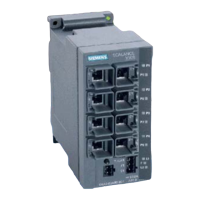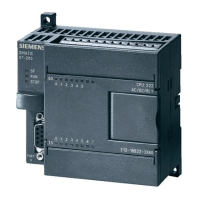Connecting Multiple Devices on a Network
B.4 Selecting the Network Cable
Text Display (TD) User Manual
System Manual, 08/2008, A5E00765548-03
157
P P
6HJPHQW
6HJPHQW
6HJPHQW
8SWRP
56
5HSHDWHU
56
5HSHDWHU
Figure B-2 Sample Network with Repeaters
B.4 Selecting the Network Cable
Selecting the Network Cable
S7-200 networks use the RS-485 standard on twisted pair cables. Table B-2 lists the
specifications for the network cable. You can connect up to 32 devices on a network
segment.
Table B- 2 General Specifications for Network Cable
Specifications Description
Cable type Shielded, twisted pair
Loop resistance ≤115 Ω /km
Effective capacitance 30 pF/m
Nominal impedance Approximately 135 Ω to 160 Ω (frequency =3 MHz to 20 MHz)
Attenuation 0.9 dB/100 m (frequency=200 kHz)
Cross-sectional core area 0.3 mm
2
to 0.5 mm
2
Cable diameter 8 mm ±0.5 mm
B.5 Biasing and Terminating the Network Cable
Biasing and Terminating the Network Cable
Siemens provides two types of network connectors that you can use to easily connect
multiple devices to a network: a standard network connector and a connector that includes a
programming port (which allows you to connect a programming station or an HMI device to
the network without disturbing any existing network connections). The programming port
connector passes all signals (including the power pins) from the S7-200 through to the
programming port, which is especially useful for connecting devices that draw power from
the S7-200 (such as a TD 200).
Both connectors have two sets of terminal screws to allow you to attach the incoming and
outgoing network cables. Both connectors also have switches to bias and terminate the
network selectively. Figure B-3 shows typical biasing and termination for the cable
connectors.

